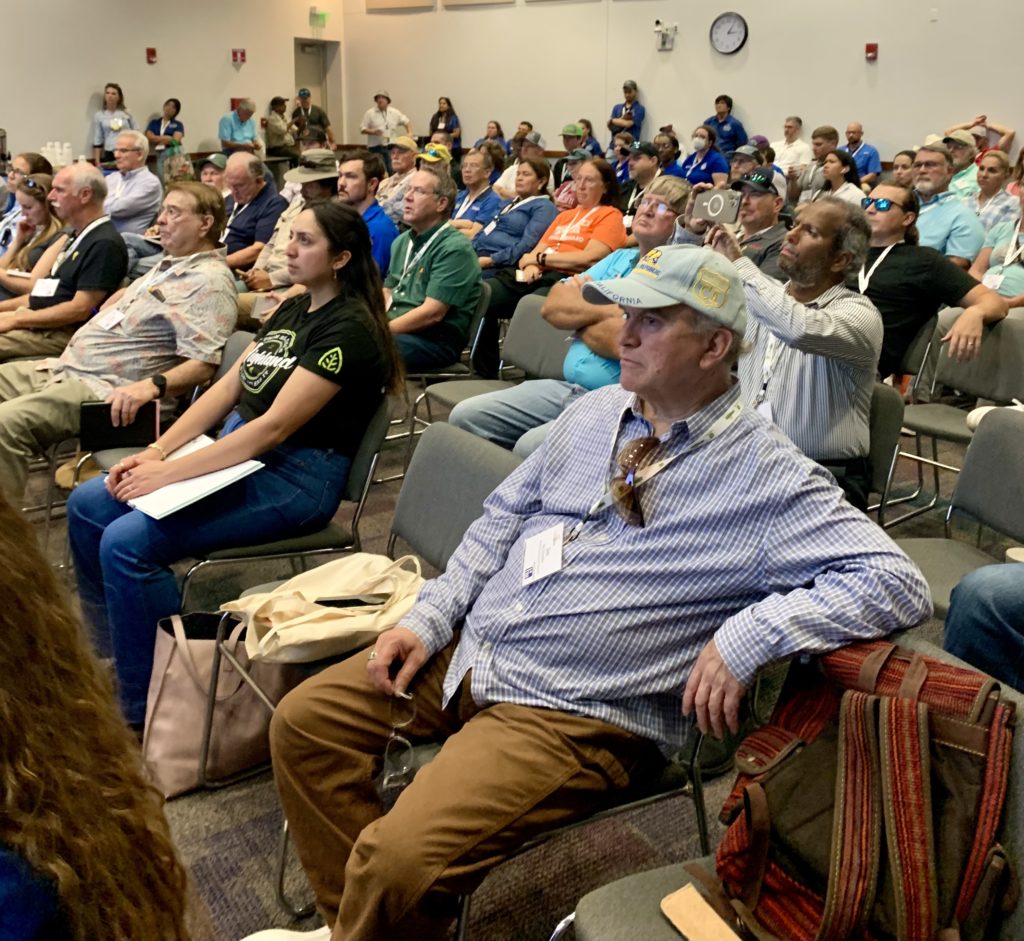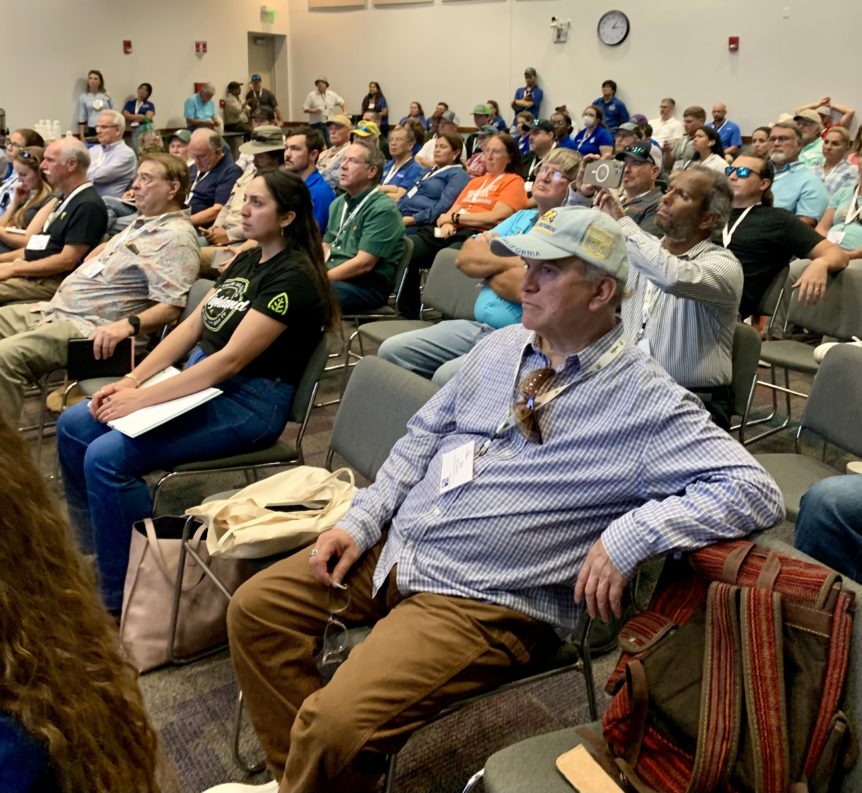
Photo by Tacy Callies
By Tacy Callies and Clint Thompson
Two tracks of concurrent seminars presented by University of Florida Institute of Food and Agricultural Sciences specialists offered growers learning options at the Florida Ag Expo. One session focused on pest management, while the other explored novel technologies and practices.
Pest Presentations
In the pest management session, Gary Vallad focused on two cucurbit diseases: downy mildew and powdery mildew. He stressed that accurate disease diagnosis is critical to making proper fungicide selections. Vallad noted that oxathiapiprolin, cyazofamid and fluazinam provided exceptional control of cucurbit downy mildew in research trials. For powdery mildew, he advised growers to avoid Fungicide Resistance Action Committee group 11 (Qol) fungicides and to alternate or mix chlorothalonil and mancozeb.
To learn how to identify and manage cucurbit viruses, Vallad recommended the Emerging Viruses in Cucurbits website (eCucurbitviruses.org).
Hugh Smith’s presentation aimed to help Florida vegetable growers manage invasive thrips. One of the pests he discussed was bean flower thrips (Megalurothrips usitatus). His research showed that the active ingredients abamectin, cyantraniliprole, methomyl and spinetoram were most effective in eliminating bean flower thrips 72 hours after application.
Most nematodes in Florida are beneficial. But to reduce damage from plant parasitic nematodes, Johan Desaeger made a case for planting cover crops. He explained how growing cover crops can achieve this objective. Cover crops can serve as non-hosts (no nematode reproduction) or a trap crop (nematodes enter but don’t reproduce). A cover crop can also have toxic root exudates or breakdown products. In addition, with cover crops, activity in the soil food web is increased, which stimulates nematode suppressiveness.
Peter Dittmar shared several strategies growers can use to improve herbicide efficacy. To effectively control weeds, growers must first properly identify them. Sedges and grasses require different active ingredients for their management. If a weed cannot be successfully identified by an Extension office or from available books and online resources, Dittmar recommended growers contact weed expert Marc Frank (mfrank@flmnh.ufl.edu) of the University of Florida Herbarium.
Having the right water pH also plays a key role in effective herbicide use. Dittmar advised that an incorrect pH can limit the uptake of an herbicide and can break down the active ingredient if mixed for a long period. Recommended pH varies by herbicide but is roughly 5.5 to 7. Read the herbicide label for the appropriate pH.
Technology Talks
The technology session centered in large part on artificial intelligence (AI). The presentations showed growers what sustainability may look like in the future while broadening their horizons on the types of crops that can be produced in the Sunshine State.
Shinsuke Agehara highlighted alternative crops, advising growers how to cash in with Florida’s advantageous climate. He specifically addressed artichokes and hops, two crops he has spent multiple years researching at the Gulf Coast Research and Education Center (GCREC).
Nathan Boyd spoke about using AI to enhance pest management systems in vegetable production. He discussed how AI can identify weeds and apply pre-mixed herbicides to target them. This is all done automatically while driving through the field. Targeted systems can lessen herbicide inputs and subsequent high costs while reducing the potential for drift and crop damage.
Yiannis Ampatzidis talked about the use of drones and AI and their effectiveness in precision crop management. AI can help growers assess plant progress more quickly and more efficiently during the growing season, while also evaluating damage from adverse weather events, which are commonplace in Florida.
Kevin Wang highlighted the effectiveness of AI in plant breeding, a tool he has utilized at the GCREC. He explained how the use of AI-powered phenomics for plant breeding purposes accelerates the timeframe a breeder has to expedite a new cultivar to the commercial level.










